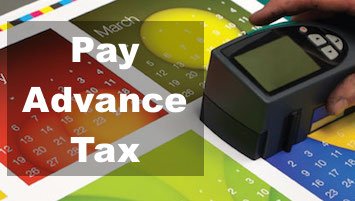If you are a salaried person, you are probably aware of the importance of tax planning. By carefully planning finances, one can minimize tax liability and save a significant amount of money. This article is mainly written for people in the 30% tax bracket. I was specifically asked, how to save tax after section 80C limit is reached. Let’s know more about it in this article.
One of the most popular tax-saving options for salaried individuals is Section 80C. The act allows us to claim a deduction of up to ₹1.5 lakh for investments made in certain specified instruments. A few popular 80C deductions are the Public Provident Fund (PPF), ELSS, Life Insurance Premiums, etc.
However, what if one has already exhausted his/her Section 80C deduction limit, there are more provisions in the Income Tax Act to claim further tax deductions.
If your net taxable income is still above ₹ 15 lakh? Don’t worry, there are still a number of ways to reduce your income tax liability.
1. Tax Deductions Available Beyond 80C
In addition to Section 80C, there are a number of other tax deductions available for salaried individuals. Let’s know more about them.

#1.1 National Pension Scheme (NPS) – 80CCD(1) & 80CCD(2)
Under 80C the maximum deductions that can be claimed is Rs. 1.5 lakhs. But deductions that can be claimed for contributions to NPS, by self and by the employer, can go beyond the Rs.1.5 Lakhs limit.
Let’s say you are a salaried person with a net taxable income of Rs. 20 lakh. You have already exhausted your Section 80C deduction limit of Rs. 1.5 lakh. You can still claim deductions for your contributions to NPS under Section 80CCD(1) and Section 80CCD(2).
Suppose one’s basic salary plus DA is Rs.20 Lakhs per annum. The person has already exhausted the limit of Rs.1.5 Lakhs (NPS contributions not included).
The persons start to self-contribute Rs.2 Laks per year (10% of basic plus DA). The employer also contributes Rs.2.8 Lakhs per year (14% of basic plus DA) to the NPS account.
It means that the person can claim the total additional deduction of Rs.4.8 Lakhs (Rs.2 + Rs.2.8 Lakhs).
#1.2 Medical Expenses – 80D
Under the section 80D, income tax deductions can be claimed which are beyond 80C deductions.
Suppose you have a medical insurance policy for which you pay a premium of Rs.30,000 per year. As per the rules, you can claim a tax deduction of up to Rs.25,000 per year.
In addition to this expense, suppose you have also paid Rs.1,00,000 towards the treatment of your parents (Sr. Citizen). Taking reference to this expense, you can claim an additional deduction of Rs.50,000. However, this deduction is possible only if the parents do not have medical coverage. In case they have medical cover, then this deduction cannot be claimed.
However, premiums paid towards the maintenance of a medical insurance cover can be claimed as a deduction. Suppose, you pay a medical insurance premium of Rs.60,000 per year for your parents. In this case, you can claim a deduction of Rs.50,000 as a tax deduction (maximum) under section 80D.
#1.3 Education Loan – 80E
Under section 80E, deductions can be claimed on the interest paid on education loans. There is no upper limit on this deduction. However, it can be claimed for a maximum of 8 years.
Suppose you, as an individual taxpayer, have taken an education loan to finance the higher education of your child. You are now repaying the interest on that loan. Let’s say the annual interest you pay on the education loan is Rs.40,000.
In this scenario, you can claim a deduction of the entire interest amount of Rs. 40,000 under Section 80E. The principal component of the loan EMI does not qualify for a deduction; only the interest component is tax deductible.
#1.4 Donations – 80G
Donations made to approved charitable institutions or relief funds are eligible for deductions under Section 80G.
Suppose, Mr. Gupta is an HNI with an annual income of Rs.60,00,000. He is interested in supporting a charitable organization involved in education and healthcare. Mr. Gupta decides to make a donation to the NGO operated by an influential socialite. He is contributing to a noble cause and trying to also benefit from it (to get tax deductions & also to widen his social circle).
Donation Amount: Mr. Gupta decided to donate Rs. 3,00,000 to the approved charitable organization.
Tax Benefit Calculation: Under Section 80G, Mr. Gupta can claim a deduction for the amount donated, subject to certain conditions. The deduction is calculated as follows:
- 50% Deduction: Mr. Gupta’s donation is eligible for a 50% deduction. This means he can claim a deduction of 50% of the donated amount, which is Rs. 3,00,000 * 50% = Rs. 1,50,000.
- Other Limitation on Deduction: There may be limits on the maximum eligible deduction based on other criteria. In this example, let’s assume that the maximum eligible deduction is 10% of Mr. Gupta’s gross total income. So, if Mr. Gupta’s gross total income is Rs. 60,00,000, the maximum eligible deduction is Rs. 6,00,000. Since his eligible deduction of Rs. 1,50,000 is well within this limit, he can claim the entire amount.
This reduction in taxable income leads to a lower tax liability for Mr. Gupta, which ultimately results in tax savings.
#1.5 Section 24(b): Interest on Home Loan
If the individual has taken a home loan, he/she can claim deductions on the interest paid under Section 24(b). This deduction is capped at Rs.2 lakh per financial year for a self-occupied property.
Suppose, Mr. and Mrs. Sharma have taken a home loan to purchase a house (as co-owners with 50-50 split). Now, they are paying interest on the loan. They both are employed and have a combined annual income of Rs. 60,00,000. Let’s assume the annual interest on their home loan is Rs.5,00,000.
Tax Benefit Calculation: Under Section 24(b), the Sharmas can claim a deduction for the interest paid on their home loan. The maximum deduction allowed for a self-occupied property is Rs.2,00,000. But in this case, the interest payable on the home loan for a property is greater than the Rs. 2,00,000 taxable limit, and the property is jointly owned by both Mr. and Mrs. Sharma. Hence, they can both claim tax deductions under Section 24(b) individually.
- Annual Interest Paid: Rs. 5,00,000
- Maximum Deduction (Mr.Sharma): Rs.2,00,000
- Maximum Deduction (Mrs.Sharma): Rs.2,00,000
But to make the tax deduction claim smooth, Mr. and Mrs. Sharma shall create a Joint account in a bank. Both of them should add funds (equally) to this joint account from their respective salary accounts. From this joint account, if the EMI gets auto-debited each month, the Rs.2,00,000 plus Rs.2,00,000 tax deduction claim under section 24b can go unchallenged.
Conclusion
So our question was, how to save tax after Section 80C limit is reached for people in their 30% tax bracket? Let’s call such people as HNIs for a moment.
The best way for such HNIs to claim an income tax deduction can vary from person to person. However, one commonly considered strategy is investing in tax-saving instruments under Section 80C of the Income Tax Act.
HNIs often have complex financial situations, and it’s essential to consider all options. Including deductions under other sections like 80D (health insurance premiums), 80E (education loan interest), and 24(b) (home loan interest) are some of the better choices.
I hope you liked this article. Please share your feedback in the comment section below.
Have a happy investing.
Suggested Reading:



![Income Tax Slabs: Tax Liability Comparison Between 2020 and 2019 [Calculator]](https://ourwealthinsights.com/wp-content/uploads/2020/02/Income-tax-slabs-Image.png)

